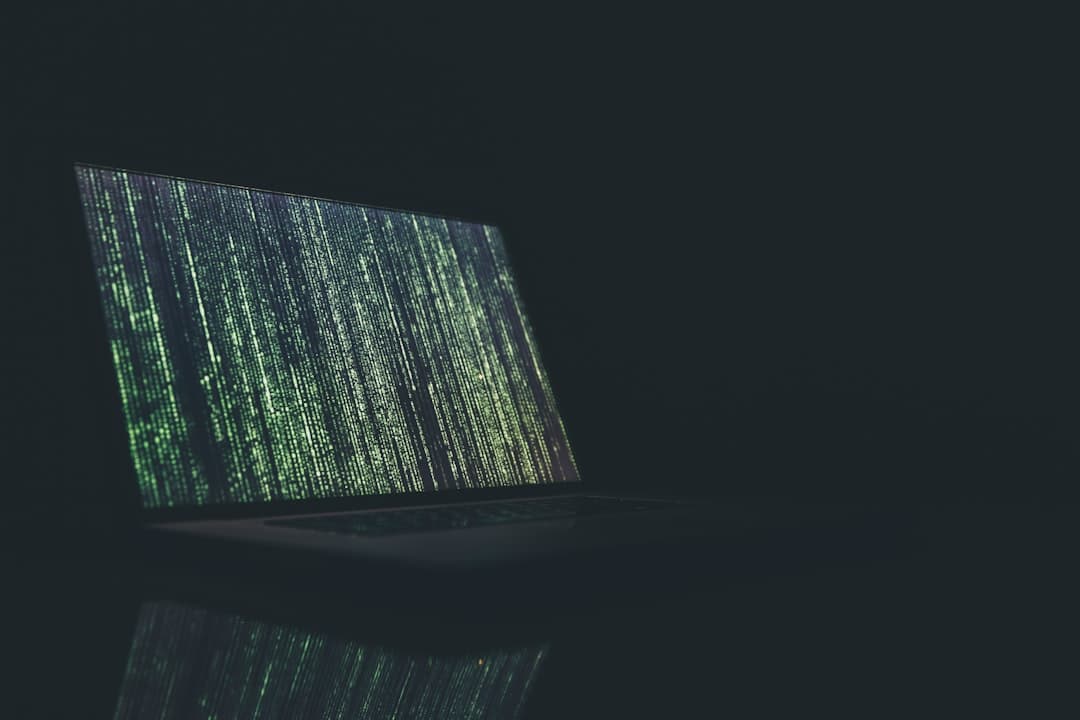Malware, an abbreviation for malicious software, encompasses a wide range of harmful programs designed to damage or exploit computers, servers, networks, and other digital devices. This category includes viruses, worms, trojans, ransomware, spyware, and adware. Malware’s primary objectives often involve data theft, system disruption, or unauthorized control.
It poses significant risks to individuals, organizations, and governmental entities. Phishing emails are a prevalent vector for malware distribution. These deceptive messages aim to manipulate recipients into clicking malicious links or downloading infected attachments.
Once a system is compromised, malware can propagate rapidly, causing extensive damage. Additionally, compromised websites and unreliable downloads serve as common malware transmission methods. Users may unknowingly acquire malware when visiting infected sites or obtaining files from dubious sources.
The consequences of malware infections can be severe. Individuals and organizations may suffer financial losses, reputational harm, and potential legal ramifications. For businesses, malware attacks can result in operational downtime, decreased productivity, and data breaches.
Recognizing the gravity of malware threats is essential for implementing robust security measures and safeguarding digital assets.
Key Takeaways
- Malware poses a significant threat to individuals and organizations, with the potential to cause data breaches, financial loss, and reputational damage.
- Effective security measures such as regular software updates, strong passwords, and employee training can help prevent malware attacks.
- Artificial intelligence can be leveraged for malware detection through the use of machine learning algorithms that can identify and respond to new and evolving threats.
- Cyberwar plays a significant role in the battle against malware, with nation-states and criminal organizations using sophisticated tactics to launch attacks and steal sensitive information.
- Protecting devices from malware attacks requires a multi-layered approach, including antivirus software, firewalls, and secure network configurations.
Implementing Effective Security Measures
Implementing effective security measures is essential for protecting against malware and other cyber threats. One of the most basic security measures is to keep all software and operating systems up to date. This includes installing security patches and updates as soon as they become available.
Outdated software can contain vulnerabilities that malware can exploit to gain access to a system. Another important security measure is to use strong, unique passwords for all accounts and to change them regularly. Passwords should be a combination of letters, numbers, and special characters, and should not be easily guessable.
Additionally, enabling two-factor authentication can provide an extra layer of security by requiring a second form of verification, such as a code sent to a mobile device. Regularly backing up data is also crucial for protecting against malware. In the event of a malware attack, having recent backups can help minimize the impact and facilitate recovery.
It’s important to store backups in a secure location that is not accessible from the network to prevent them from being compromised by malware. Training employees on cybersecurity best practices is another important security measure. Many malware attacks are successful because of human error, such as clicking on a malicious link or downloading an infected file.
By educating employees on how to recognize and avoid potential threats, organizations can significantly reduce their risk of a malware attack.
Leveraging Artificial Intelligence for Malware Detection

Artificial intelligence (AI) has emerged as a powerful tool for detecting and combating malware. AI-powered systems can analyze vast amounts of data to identify patterns and anomalies that may indicate the presence of malware. This can help organizations detect and respond to threats more quickly and effectively than traditional methods.
One way AI is used for malware detection is through machine learning algorithms. These algorithms can be trained on large datasets of known malware samples to learn to recognize common characteristics and behaviors of malware. Once trained, the algorithms can analyze new data in real-time to identify potential threats based on the patterns they have learned.
Another way AI is used for malware detection is through behavioral analysis. AI-powered systems can monitor the behavior of users and devices on a network to identify any unusual or suspicious activity that may indicate a malware infection. This can help organizations detect and respond to threats that may have evaded traditional signature-based detection methods.
AI can also be used for automated response and remediation. Once a potential threat is identified, AI-powered systems can take action to contain and mitigate the impact of the threat. This can include isolating infected devices, blocking malicious traffic, and initiating cleanup and recovery processes.
Overall, leveraging AI for malware detection can significantly enhance an organization’s ability to defend against cyber threats. By using AI-powered systems to analyze data and detect potential threats in real-time, organizations can improve their security posture and better protect against malware attacks.
The Role of Cyberwar in the Battle Against Malware
| Metrics | Data |
|---|---|
| Number of cyberwar attacks | 2000 |
| Percentage of malware stopped by cyberwar | 75% |
| Cost of cyberwar defense | 10 billion |
| Number of malware-infected devices | 500 million |
Cyberwarfare has become an increasingly important aspect of the battle against malware and other cyber threats. Nation-states and other threat actors are constantly engaged in cyber operations aimed at disrupting or damaging their adversaries’ infrastructure and systems. This includes the development and deployment of malware for espionage, sabotage, and other malicious purposes.
One of the key roles of cyberwarfare in the battle against malware is in the development of offensive capabilities. Nation-states invest significant resources in developing advanced malware that can be used to infiltrate and compromise their adversaries’ systems. This includes the development of sophisticated viruses, worms, trojans, and other types of malware designed to evade detection and cause significant damage.
Cyberwarfare also plays a role in defensive operations against malware. Nations and organizations invest in cybersecurity capabilities to defend against cyber threats, including the development of tools and technologies for detecting and mitigating malware attacks. This includes the use of advanced threat intelligence, network monitoring, and incident response capabilities to identify and respond to malware attacks in real-time.
The role of cyberwarfare in the battle against malware highlights the importance of international cooperation and collaboration in addressing cyber threats. As cyber attacks become increasingly sophisticated and widespread, it is essential for nations and organizations to work together to develop effective strategies for defending against malware and other cyber threats.
Protecting Your Devices from Malware Attacks
Protecting your devices from malware attacks is essential for safeguarding your personal information and sensitive data. There are several steps you can take to minimize your risk of falling victim to a malware attack. First and foremost, it’s important to use reputable antivirus software on all your devices.
Antivirus software can help detect and remove malware from your system, as well as provide real-time protection against new threats. Be sure to keep your antivirus software up to date with the latest definitions and security patches to ensure it remains effective against the latest threats. It’s also important to be cautious when browsing the internet and downloading files.
Avoid clicking on suspicious links or downloading files from untrustworthy sources, as these can often contain malware. Be particularly wary of unsolicited emails or messages that may be phishing attempts designed to trick you into downloading malware. Regularly updating your operating system and software is another important step in protecting your devices from malware attacks.
Software updates often include security patches that address vulnerabilities that could be exploited by malware. By keeping your software up to date, you can minimize your risk of falling victim to a malware attack. Finally, consider using a virtual private network (VPN) when connecting to public Wi-Fi networks.
VPNs encrypt your internet traffic, making it more difficult for attackers to intercept or manipulate your data. This can help protect your devices from malware attacks when using public Wi-Fi networks in places like coffee shops, airports, or hotels.
Best Practices for Malware Prevention and Detection
In addition to implementing effective security measures, there are several best practices for preventing and detecting malware that individuals and organizations should follow. Regularly conducting security assessments and penetration testing can help identify vulnerabilities that could be exploited by malware. By proactively identifying and addressing security weaknesses, organizations can reduce their risk of falling victim to a malware attack.
Implementing network segmentation can also help prevent the spread of malware within an organization’s network. By dividing the network into separate segments with different access controls, organizations can limit the impact of a malware infection and prevent it from spreading throughout the entire network. Monitoring network traffic and user behavior can help detect potential signs of a malware infection.
By analyzing network traffic for unusual patterns or behaviors, organizations can identify potential threats before they cause significant damage. Educating employees on cybersecurity best practices is crucial for preventing malware infections. By training employees on how to recognize and avoid potential threats, organizations can reduce their risk of falling victim to phishing attacks or other social engineering tactics used by attackers to spread malware.
Regularly reviewing and updating security policies and procedures is also important for preventing and detecting malware infections. By staying up to date with the latest security best practices and technologies, organizations can better protect against evolving threats.
The Future of Malware Protection: Advancements in AI and Security Technology
The future of malware protection is closely tied to advancements in artificial intelligence (AI) and security technology. AI-powered systems are becoming increasingly sophisticated at detecting and responding to malware attacks in real-time. These systems can analyze vast amounts of data to identify potential threats and take automated action to contain and mitigate the impact of an attack.
One area of advancement in AI for malware protection is in the use of deep learning algorithms. These algorithms are capable of learning from large datasets of known malware samples to recognize patterns and behaviors that may indicate the presence of new or unknown threats. By continuously learning from new data, deep learning algorithms can adapt to evolving threats and improve their ability to detect and respond to malware attacks.
Another area of advancement in security technology is in the use of blockchain for securing data and transactions. Blockchain technology provides a decentralized and tamper-proof way of storing data, making it more difficult for attackers to manipulate or compromise sensitive information. By leveraging blockchain technology, organizations can better protect against data breaches and other forms of cyber attacks that may be facilitated by malware.
The future of malware protection also includes advancements in endpoint security solutions that provide comprehensive protection for all devices within an organization’s network. These solutions combine traditional antivirus capabilities with advanced threat detection technologies such as machine learning and behavioral analysis to provide real-time protection against evolving threats. Overall, the future of malware protection is focused on leveraging advancements in AI and security technology to develop more effective tools and strategies for defending against cyber threats.
By continuously innovating and adapting to new challenges, organizations can better protect against malware attacks and minimize their risk of falling victim to cybercrime.
If you’re interested in learning more about cybersecurity and the potential threats in the digital world, you may want to check out this article on tourism in the metaverse and the implications for reality. It discusses the potential risks of malware and other cyber threats in virtual environments. (source) This article provides valuable insights into the intersection of technology and security, offering a deeper understanding of the importance of protecting oneself from online threats.
FAQs
What is malware?
Malware is a term used to describe any type of malicious software designed to damage or disrupt a computer system or network. This can include viruses, worms, trojans, ransomware, spyware, and adware.
How does malware infect a computer?
Malware can infect a computer through various means, including email attachments, malicious websites, infected USB drives, and software downloads. It can also spread through vulnerabilities in operating systems and software.
What are the potential risks of malware?
Malware can cause a range of issues, including data theft, financial loss, system damage, and disruption of operations. It can also lead to identity theft, unauthorized access to sensitive information, and the compromise of personal and business data.
How can I protect my computer from malware?
To protect your computer from malware, it is important to use reputable antivirus and antimalware software, keep your operating system and software up to date, be cautious when clicking on links or downloading files, and regularly back up your data.
What should I do if my computer is infected with malware?
If you suspect that your computer is infected with malware, it is important to disconnect it from the internet and run a full system scan using antivirus software. You should also consider seeking professional help to remove the malware and restore your system to a safe state.












Leave a Reply